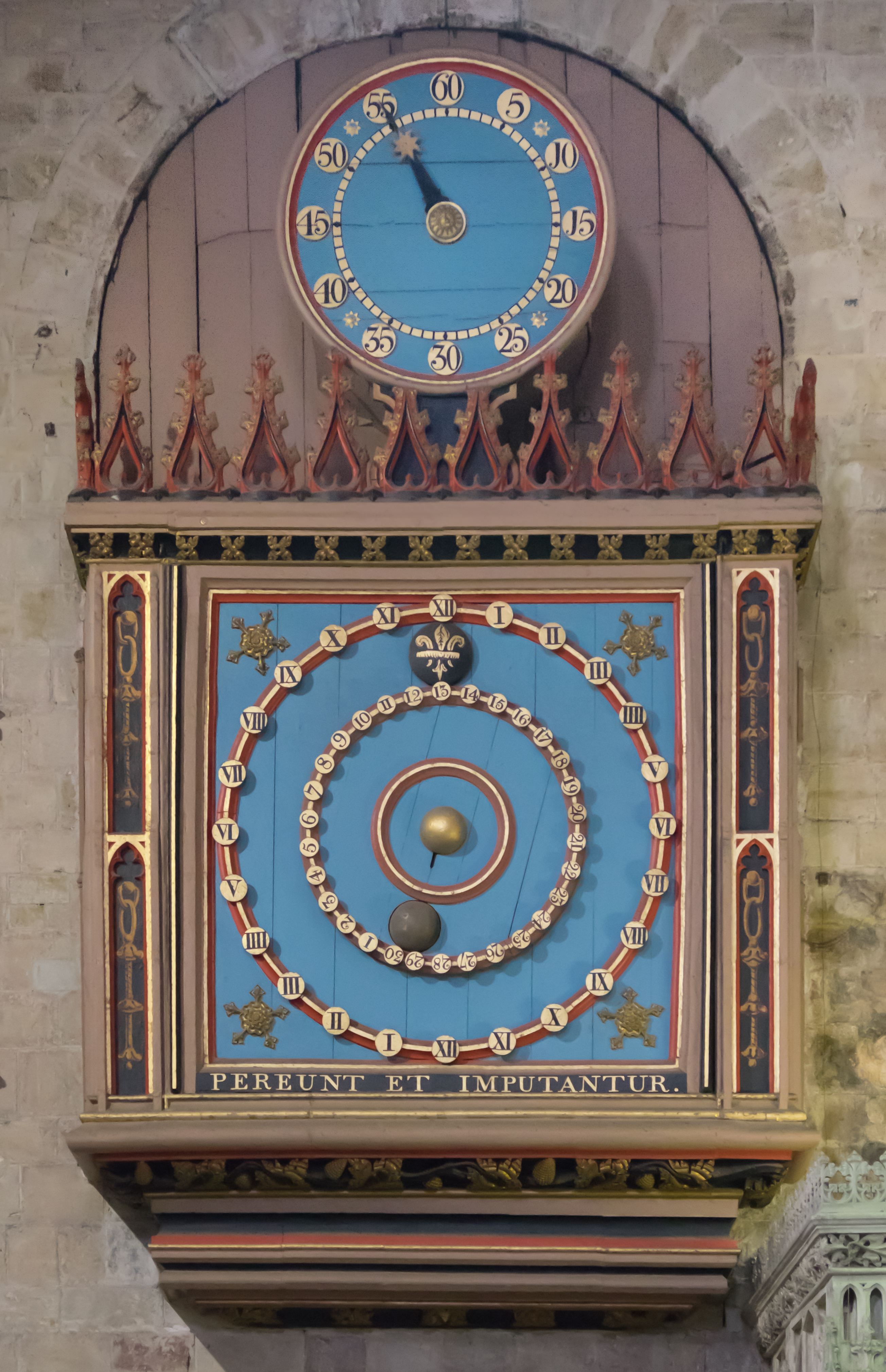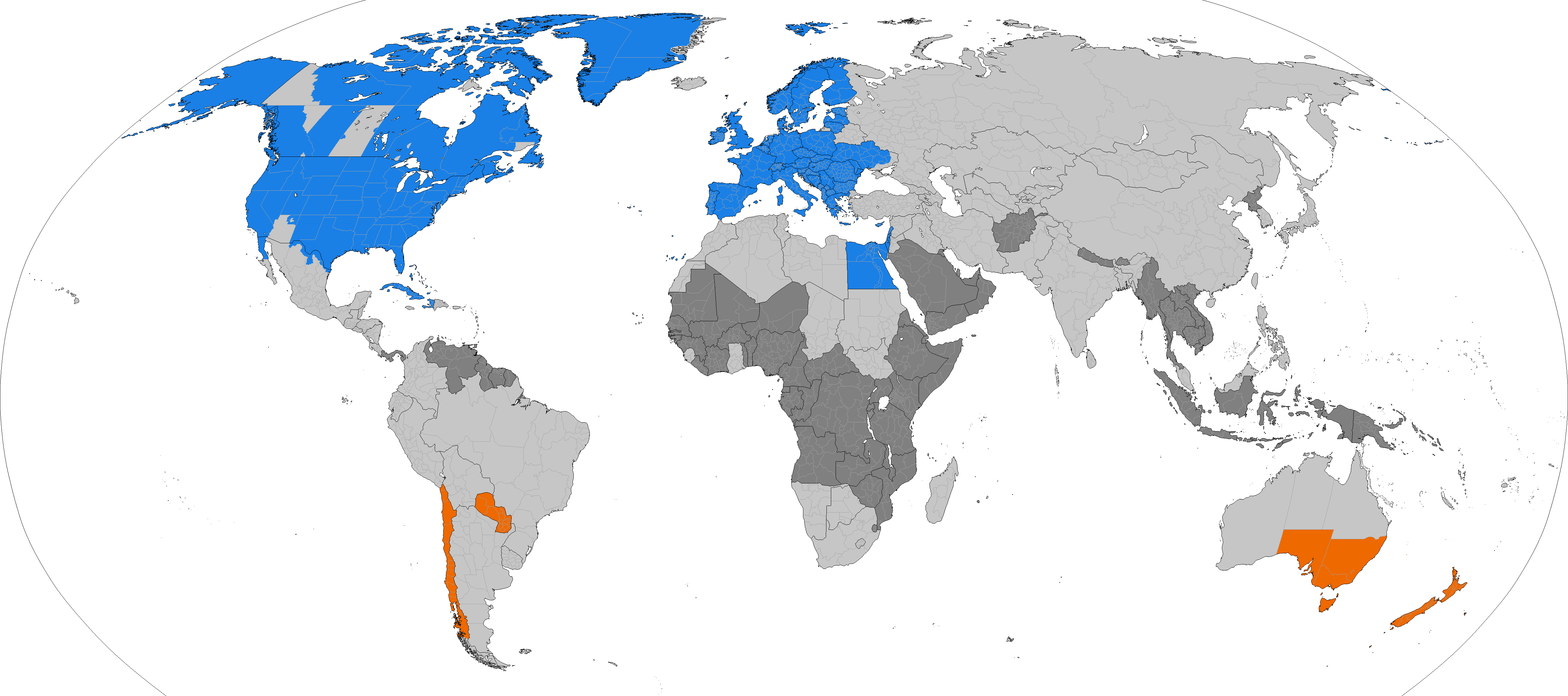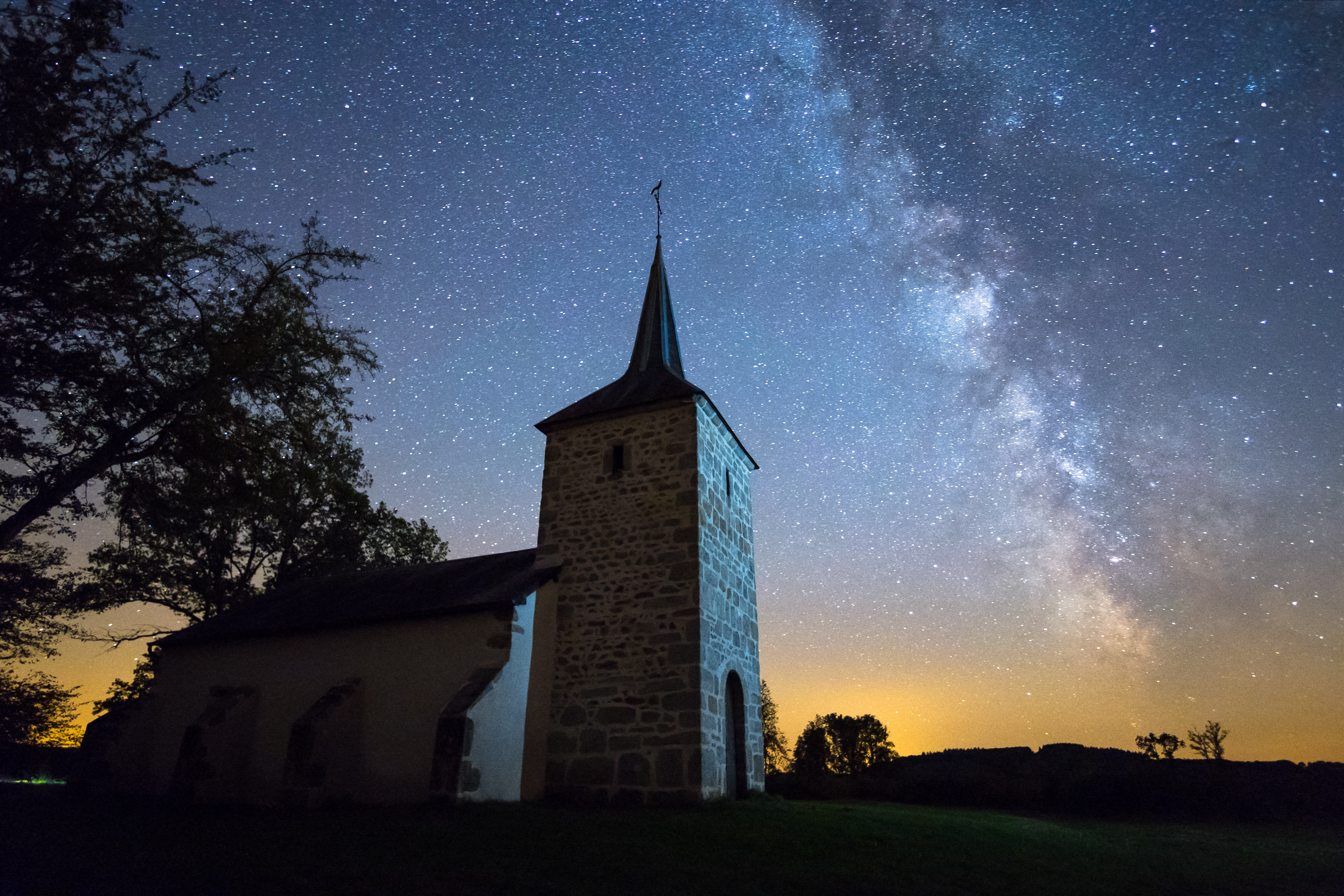|
Midnight
Midnight is the transition time from one day to the next – the moment when the date changes, on the local official clock time for any particular jurisdiction. By clock time, midnight is the opposite of noon, differing from it by 12 hours. Solar midnight is the time antisolar point, opposite to solar noon, when the Sun is meridian (astronomy), closest to the nadir, and the night is culmination, equidistant from sunset and sunrise. Due to the advent of time zones, which regularize time across a range of meridian (geography), meridians, and daylight saving time, solar midnight rarely coincides with 12 midnight on the clock. Solar midnight depends on longitude and time of the year rather than on time zone. In ancient Roman timekeeping, midnight was halfway between dusk and dawn (i.e., solar midnight), varying according to the seasons. In some Slavic languages, "midnight" has an additional geographic association with "north" (as "noon" does with "south"). Modern Polish languag ... [...More Info...] [...Related Items...] OR: [Wikipedia] [Google] [Baidu] |
12-hour Clock
The 12-hour clock is a time convention in which the 24 hours of the day are divided into two periods: a.m. (from Latin , translating to "before midday") and p.m. (from Latin , translating to "after midday"). Each period consists of 12 hours numbered: 12 (acting as 0), 1, 2, 3, 4, 5, 6, 7, 8, 9, 10, and 11. The 12-hour clock has been developed since the second millennium BC and reached its modern form in the 16th century. The 12-hour time convention is common in several English-speaking nations and former British Empire, British colonies, as well as a few other countries. In English-speaking countries: "12 p.m." usually indicates noon, while "12 a.m." means midnight, but the reverse convention has also been used (see #Confusion at noon and midnight, § Confusion at noon and midnight). "Noon" and "midnight" are unambiguous. History and use The natural day-and-night division of a calendar day forms the fundamental basis as to why each day is split ... [...More Info...] [...Related Items...] OR: [Wikipedia] [Google] [Baidu] |
24-hour Clock
The modern 24-hour clock is the convention of timekeeping in which the day runs from midnight to midnight and is divided into 24 hours. This is indicated by the hours (and minutes) passed since midnight, from to , with as an option to indicate the end of the day. This system, as opposed to the 12-hour clock, is the most commonly used time notation in the world today, and is used by the international standard ISO 8601. A number of countries, particularly English speaking, use the 12-hour clock, or a mixture of the 24- and 12-hour time systems. In countries where the 12-hour clock is dominant, some professions prefer to use the 24-hour clock. For example, in the practice of medicine, the 24-hour clock is generally used in documentation of care as it prevents any ambiguity as to when events occurred in a patient's medical history. Description A time of day is written in the 24-hour notation in the form hh:mm (for example 01:23) or hh:mm:ss (for example, 01:23:45), where h ... [...More Info...] [...Related Items...] OR: [Wikipedia] [Google] [Baidu] |
Relative Hour
Relative hour (Hebrew singular: / ; plural: / ), sometimes called halachic hour, temporal hour, seasonal hour and variable hour, is a term used in rabbinic Jewish law that assigns 12 hours to each day and 12 hours to each night, all throughout the year. A relative hour has no fixed length in absolute time, but changes with the length of daylight each day - depending on summer (when the days are long and the nights are short), and in winter (when the days are short and the nights are long). Even so, in all seasons a day is always divided into 12 hours, and a night is always divided into 12 hours, which invariably makes for a longer hour or a shorter hour. At Mediterranean latitude, one hour can be about 45 minutes at the winter solstice, and 75 minutes at summer solstice. All of the hours mentioned by the Sages in either the Mishnah or Talmud, or in other rabbinic writings, refer strictly to relative hours. Another feature of this ancient practice is that, unlike the standard ... [...More Info...] [...Related Items...] OR: [Wikipedia] [Google] [Baidu] |
Sunset
Sunset (or sundown) is the disappearance of the Sun at the end of the Sun path, below the horizon of the Earth (or any other astronomical object in the Solar System) due to its Earth's rotation, rotation. As viewed from everywhere on Earth, it is a phenomenon that happens approximately once every 24 hours, except in areas close to the Geographical pole, poles. The equinox Sun sets due west at the moment of both the spring and autumn equinoxes. As viewed from the Northern Hemisphere, the Sun sets to the northwest (or not at all) in the spring and summer, and to the southwest in the autumn and winter; these seasons are reversed for the Southern Hemisphere. The sunset is defined in astronomy the moment the upper limb of the Sun disappears below the horizon. Near the horizon, atmospheric refraction causes sunlight rays to be distorted to such an extent that geometrically the solar disk is already about one diameter below the horizon when a sunset is observed. Sunset is distinct from ... [...More Info...] [...Related Items...] OR: [Wikipedia] [Google] [Baidu] |
Daylight Saving Time
Daylight saving time (DST), also referred to as daylight savings time, daylight time (Daylight saving time in the United States, United States and Daylight saving time in Canada, Canada), or summer time (British Summer Time, United Kingdom, Summer time in Europe, European Union, and others), is the practice of advancing clocks to make better use of the longer daylight available during summer so that darkness falls at a later clock time. The standard implementation of DST is to set clocks forward by one hour in spring (season), spring or late winter, and to set clocks back by one hour to standard time in the autumn (or ''fall'' in North American English, hence the mnemonic: "spring forward and fall back"). Overview As of 2023, around 34 percent of the world's countries use DST. Some countries observe it only in some regions. In Canada, all of Yukon Time Zone, Yukon, most of Time in Saskatchewan, Saskatchewan, and parts of Nunavut, Ontario, British Columbia and Quebec do not ... [...More Info...] [...Related Items...] OR: [Wikipedia] [Google] [Baidu] |
Dawn
Dawn is the time that marks the beginning of twilight before sunrise. It is recognized by the diffuse sky radiation, appearance of indirect sunlight being Rayleigh scattering, scattered in Earth's atmosphere, when the centre of the Sun's disc has reached 18° below the observer's horizon. This morning twilight period will last until sunrise (when the Sun's upper limb breaks the horizon), when daylight, direct sunlight outshines the light scattering by particles, diffused light. Etymology "Dawn" derives from the Old English verb , "to become day". Types of dawn Dawn begins with the first sight of lightness in the morning, and continues until the Sun breaks the horizon. The morning twilight is divided in three phases, which are determined by the angular distance of the centre of the Sun (degree (angle), degrees below the horizon) in the morning. These are astronomical, nautical and civil twilight. Astronomical dawn Astronomical dawn begins when the center of the Sun is 18 d ... [...More Info...] [...Related Items...] OR: [Wikipedia] [Google] [Baidu] |
Night
Night, or nighttime, is the period of darkness when the Sun is below the horizon. Sunlight illuminates one side of the Earth, leaving the other in darkness. The opposite of nighttime is daytime. Earth's rotation causes the appearance of sunrise and sunset. Moonlight, airglow, starlight, and light pollution dimly illuminate night. The duration of day, night, and twilight varies depending on the time of year and the latitude. Night on other celestial bodies is affected by their rotation and orbital periods. The planets Mercury and Venus have much longer nights than Earth. On Venus, night lasts about 58 Earth days. The Moon's rotation is tidally locked, rotating so that one of the sides of the Moon always faces Earth. Nightfall across portions of the near side of the Moon results in lunar phases visible from Earth. Organisms respond to the changes brought by nightfall: darkness, increased humidity, and lower temperatures. Their responses include direct reactions a ... [...More Info...] [...Related Items...] OR: [Wikipedia] [Google] [Baidu] |
South
South is one of the cardinal directions or compass points. The direction is the opposite of north and is perpendicular to both west and east. Etymology The word ''south'' comes from Old English ''sūþ'', from earlier Proto-Germanic ''*sunþaz'' ("south"), possibly related to the same Proto-Indo-European root that the word ''sun'' derived from. Some languages describe south in the same way, from the fact that it is the direction of the sun at noon (in the Northern Hemisphere), like Latin meridies 'noon, south' (from medius 'middle' + dies 'day', ), while others describe south as the right-hand side of the rising sun, like Biblical Hebrew תֵּימָן teiman 'south' from יָמִין yamin 'right', Aramaic תַּימנַא taymna from יָמִין yamin 'right' and Syriac ܬܰܝܡܢܳܐ taymna from ܝܰܡܝܺܢܳܐ yamina (hence the name of Yemen, the land to the south/right of the Levant). South is sometimes abbreviated as S. Navigation By convention, the ''bottom or down ... [...More Info...] [...Related Items...] OR: [Wikipedia] [Google] [Baidu] |
Hebrew Calendar
The Hebrew calendar (), also called the Jewish calendar, is a lunisolar calendar used today for Jewish religious observance and as an official calendar of Israel. It determines the dates of Jewish holidays and other rituals, such as '' yahrzeits'' and the schedule of public Torah readings. In Israel, it is used for religious purposes, provides a time frame for agriculture, and is an official calendar for civil holidays alongside the Gregorian calendar. Like other lunisolar calendars, the Hebrew calendar consists of months of 29 or 30 days which begin and end at approximately the time of the new moon. As 12 such months comprise a total of just 354 days, an extra lunar month is added every 2 or 3 years so that the long-term average year length closely approximates the actual length of the solar year. Originally, the beginning of each month was determined based on physical observation of a new moon, while the decision of whether to add the leap month was based on observation ... [...More Info...] [...Related Items...] OR: [Wikipedia] [Google] [Baidu] |
Noon
Noon (also known as noontime or midday) is 12 o'clock in the daytime. It is written as 12 noon, 12:00 m. (for '' meridiem'', literally 12:00 midday), 12 p.m. (for ''post meridiem'', literally "after midday"), 12 pm, or 12:00 (using a 24-hour clock) or 1200 ( military time). Solar noon is the time when the Sun appears to contact the local celestial meridian. This is when the Sun reaches its apparent highest point in the sky, at 12 noon apparent solar time and can be observed using a sundial. The local or clock time of solar noon depends on the date, longitude, and time zone A time zone is an area which observes a uniform standard time for legal, Commerce, commercial and social purposes. Time zones tend to follow the boundaries between Country, countries and their Administrative division, subdivisions instead of ..., with Daylight Saving Time tending to place solar noon closer to 1:00pm. Etymology The word ''noon'' is derived from Latin ''nona hora'', the ninth c ... [...More Info...] [...Related Items...] OR: [Wikipedia] [Google] [Baidu] |
National Institute Of Standards And Technology
The National Institute of Standards and Technology (NIST) is an agency of the United States Department of Commerce whose mission is to promote American innovation and industrial competitiveness. NIST's activities are organized into Outline of physical science, physical science laboratory programs that include Nanotechnology, nanoscale science and technology, engineering, information technology, neutron research, material measurement, and physical measurement. From 1901 to 1988, the agency was named the National Bureau of Standards. History Background The Articles of Confederation, ratified by the colonies in 1781, provided: The United States in Congress assembled shall also have the sole and exclusive right and power of regulating the alloy and value of coin struck by their own authority, or by that of the respective states—fixing the standards of weights and measures throughout the United States. Article 1, section 8, of the Constitution of the United States, ratified i ... [...More Info...] [...Related Items...] OR: [Wikipedia] [Google] [Baidu] |







